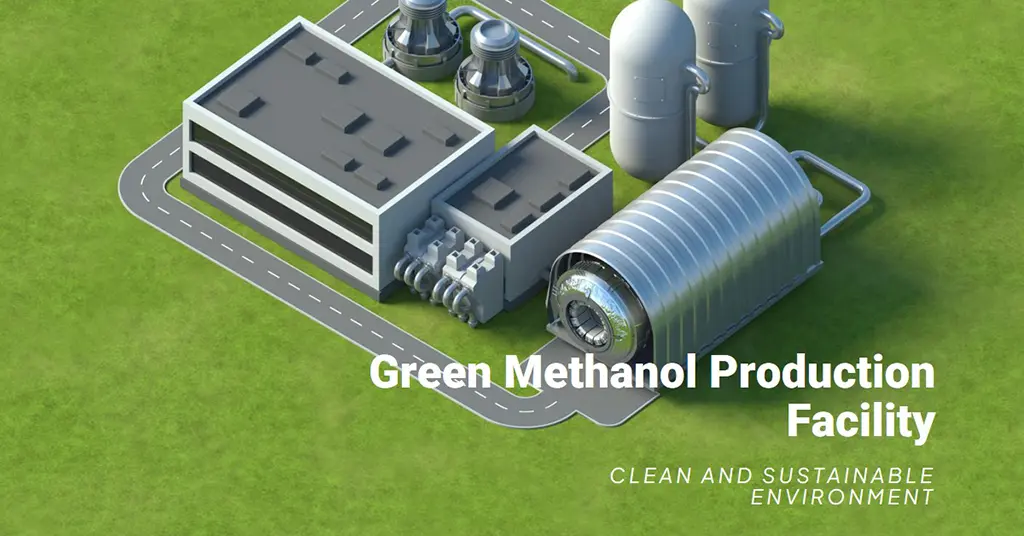Methanol is an important raw material widely used in the chemical, construction, and plastics industries. Traditionally, methanol production relies on fossil fuels, which contributes significantly to greenhouse gas emissions. However, green methanol offers a sustainable alternative. By synthesizing methanol from renewable resources and carbon capture technologies, green methanol significantly reduces environmental impact. This innovative production method not only provides the same industrial benefits as conventional methanol but also supports the global shift towards cleaner, more sustainable energy solutions.
The Growing Methanol Market
In 2021, the world market for methanol exceeded $37.4 billion and it is expected to hit $61.7 billion by 2030 with an annual growth rate of production worldwide. In the same year, global production of methanol was estimated at over 111 million metric tons, representing an increase of almost four percent from the previous year’s figure. This increasing demand highlights the need for sustainable production processes like green methanol
Methanol’s Environmental Impacts
Apart from the advantages of methanol, there are environmental hazards when it is released, in general producing toxic, flammable, polluted air and soil or water, actions harmful for aquatic life, and risks to human health, among others. However, all these could be mitigated if it’s sourced from biomass, green hydrogen, or captured CO2 from air or industrial emissions.
Green Methanol Vs Methanol Production Processes
Traditional Methanol Production
Feedstock:
Natural Gas: The main feedstock for traditional methanol production is natural gas.
Coal or Biomass: Sometimes used as an alternative feedstock.
Steam Reforming:
Process: Natural gas (mainly methane) reacts with steam under high pressure and temperature in the presence of a catalyst.
Reaction: CH4 + H2O = CO + 3H2
Water-Gas Shift Reaction:
Process: The carbon monoxide produced is reacted with steam to produce carbon dioxide and more hydrogen.
Reaction:CO + H2O <==> CO2 + H2
Methanol Synthesis:
Process: The hydrogen and carbon monoxide mixture (synthesis gas) is passed over a catalyst to produce methanol.
Reaction: CH2O + H2 = CH3OH
Purification:
The raw methanol is purified to remove water and other impurities to produce commercial-grade methanol.
Green Methanol Production
Feedstock:
Renewable Resources: Green methanol is produced using renewable resources like biomass, renewable electricity and captured CO2.
Gasification or Electrolysis:
Biomass Gasification: Biomass is gasified to produce synthesis gas (a mixture of hydrogen and carbon monoxide).
Electrolysis: Renewable electricity is used to split water into hydrogen and oxygen.
Read about: What is an electrolyzer and its types
CO2 Capture:
Process: CO2 is captured from industrial emissions or directly from the air using various capture technologies.
Methanol Synthesis:
Process: Hydrogen produced from electrolysis is reacted with captured CO2 to produce methanol.
Reaction: CO2+3H2=CH3OH+H2O
Purification:
Same as traditional methanol, raw green methanol is purified to remove impurities and water.
Comparison
Aspect | Traditional Methanol | Green Methanol |
Feedstock | Natural gas, coal, biomass | Renewable resources, captured CO2 |
Primary Process | Steam reforming | Gasification, electrolysis |
Environmental Impact | High CO2 emissions | Low or neutral CO2 emissions |
Sustainability | Depends on fossil fuels | Uses renewable resources |
Production Cost | Generally lower | Higher due to advanced technology |
Conclusion:
As the world goes green and reduces carbon emissions, green methanol is the way to go. Invest in this and the future will be cleaner and greener. With renewable resources and advanced processes, green methanol has all the benefits of methanol and minimizes the environmental impact.








